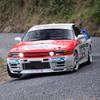Ben's R32 Gtst Build
Announcements
-
Similar Content
-
Latest Posts
-
Are you kidding? Pulling any fuse will brick the entire car, from the sunroof to the tyre pressure sensors. I don't have enough soul left to sell. Yeah, this old girl is complete now from a performance POV (how often have you heard that?). I'll just maintain and enjoy for a few years and consider getting an M-something (probs M2) in the future.
-
By Dose Pipe Sutututu · Posted
by the time everything is done a M3/M4 is cheaper and faster lol -
By Murray_Calavera · Posted
ooof still painfully expensive. I'd imagine by the time it's installed and tuned you will have spent double that. -
By Dose Pipe Sutututu · Posted
Don't do that, time for a Bosch Motorsport ABS package. Seems to be semi affordable these days. https://www.efihardware.com/products/3193/bosch-motorsport-abs-m5-kit-clubsport -
Yea I could, but it is amusing how shit a stock seat and belt are
-









Recommended Posts
Create an account or sign in to comment
You need to be a member in order to leave a comment
Create an account
Sign up for a new account in our community. It's easy!
Register a new accountSign in
Already have an account? Sign in here.
Sign In Now